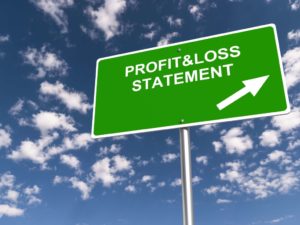First-in, first-out FIFO method in perpetual inventory system

Choosing—and sticking to—an inventory valuation method to measure these amounts is essential in keeping tax-ready books. We reconcile, review, and repeat until your finances are CPA ready so you don’t have to. If your inventory costs don’t really change, choosing a method of inventory valuation won’t seem important. For instance, if a brand’s COGS is higher and profits are lower, businesses will pay less in taxes when using LIFO and are less at risk of accounting discrepancies if COGS spikes.
Step-by-Step Guide to the FIFO COGS Formula
Specific inventory tracing is an inventory valuation method that tracks the value of every individual piece of inventory. This method is usually used by businesses that sell a very small collection of highly unique products, such as art pieces. First in, first out (FIFO) is an inventory method that assumes the first goods purchased are the first goods sold.

Create a free account to unlock this Template

To calculate the profit a company produces, it must track sales revenue as well as the costs involved in producing its products. The way a business firm values its inventory can affect its balance sheet and income statement greatly due to the large amounts of money tied up in inventory for product-producing firms. Managers must have a way to account for the different prices assigned to inventory at the end of each accounting period. But it does require strong organizational processes and documentation to track inventory in-flows and out-flows accurately. Put systems in place during the transition to set your business up for FIFO success. With proper documentation, you can directly match cost of goods sold to the actual purchase costs of inventory sold during the period.
- Bertie also wants to know the value of her remaining inventory—she wants her balance sheet to be accurate.
- These numbers might differ based on the chosen inventory valuation method in an increasing or decreasing price environment.
- In other words, under FIFO, the cost of materials is charged to production in the order of purchases.
- This leads to a lower tax burden by minimizing paper profits linked to inflationary increases in replacement costs.
- Get instant access to lessons taught by experienced private equity pros and bulge bracket investment bankers including financial statement modeling, DCF, M&A, LBO, Comps and Excel Modeling.
- During inflationary periods, this often means that the cost of goods sold is lower compared to other methods like LIFO.
- ShipBob is able to identify inventory locations that contain items with an expiry date first and always ship the nearest expiring lot date first.
Other Inventory Valuation Methods
While this check figure will not ensure that you picked the right units, it will ensure that you accounted for all the units and calculated the cost correctly. Some companies https://www.bookstime.com/articles/predetermined-overhead-rate have a website link to their reported financial statements on the SEC. This information is found on the annual or quarterly report, 10-Q, and 10-K forms, respectively.
- When the cost of inventory is rising, FIFO will ensure that the older, less expensive inventory cost is transferred to Cost of Goods Sold.
- This means that the products with the earliest expiration dates or production dates are sold before those with later dates.
- The inventory valuation method opposite to FIFO is LIFO, where the last item purchased or acquired is the first item out.
- Sal’s Sunglasses is a sunglass retailer preparing to calculate the cost of goods sold for the previous year.
- To ensure they don’t keep old stock too long, they decided to hold a mid-season sale to encourage their purchase.
A higher inventory valuation can improve a brand’s balance sheets and minimize its inventory write-offs, so using FIFO can really benefit a business financially. While there is no one “right” inventory valuation method, every method has its own advantages and disadvantages. Here are some of the benefits of using the FIFO method, as well as some of the drawbacks. Notice that Susan lists the 130 units remaining in her inventory as costing $4 apiece. This is because she presumes that she sold the 80 units that she bought for $3 apiece first.
Average cost inventory

As for LIFO, it usually reduces taxes in inflationary periods because it reduces profits, but this isn’t always a good thing. Lower profits can work against you when you’re seeking investors or applying for credit. Also the value of your inventory may be artificially undervalued during inflationary periods. In any case, keeping a close eye on your inventory levels with the right accounting tools will help you make informed decisions about which method works best for your company.

Inventory Costing Methods & Inventory Valuation Methods
This calculation method typically results in a higher net income being recorded for the business. The method a business chooses to account for its inventory can directly impact its financial statements. Net income will be lower, using the LIFO method of accounting inventory, and the cost of goods sold will be higher since the higher price will be used to calculate that figure. The company’s tax liability fifo inventory method formula will be lower due to lower net income and higher cost of goods sold. The value of inventory shown on the balance sheet will be lower since $2.35 rather than $2.50 is used to calculate the value of ending inventory. Net income will be higher, using the FIFO method of accounting inventory, and the cost of goods sold will be lower since the lower price will be used to calculate that figure.
The First-in First-out (FIFO) method of inventory valuation is based on the assumption that the sale or usage of goods follows the same order in which they are bought. In other words, under the first-in, first-out method, the earliest purchased or produced goods are sold/removed and expensed first. Therefore, the most recent costs remain on the balance sheet, while the oldest costs are expensed first.
- Typical economic situations involve inflationary markets and rising prices.
- The FIFO method of costing is mostly used in accounting for goods that are sold.
- The ending inventory balance is valued at the most recent costs, which reflect replacement costs at the end of the accounting period.
- For example, consider the same example above with two snowmobiles at a unit cost of $50,000 and a new purchase for a snowmobile for $75,000.
- For instance, say a candle company buys a batch of 1,000 candles from their supplier at $2 apiece.
FIFO, on the other hand, is the most common inventory valuation method in most countries, accepted by International Financial Reporting Standards Foundation (IRFS) regulations. Under FIFO, the brand assumes the 100 mugs sold come from the original batch. Because the brand is using the COGS of $5, rather than $8, they are able to represent higher profits on their balance sheet.

